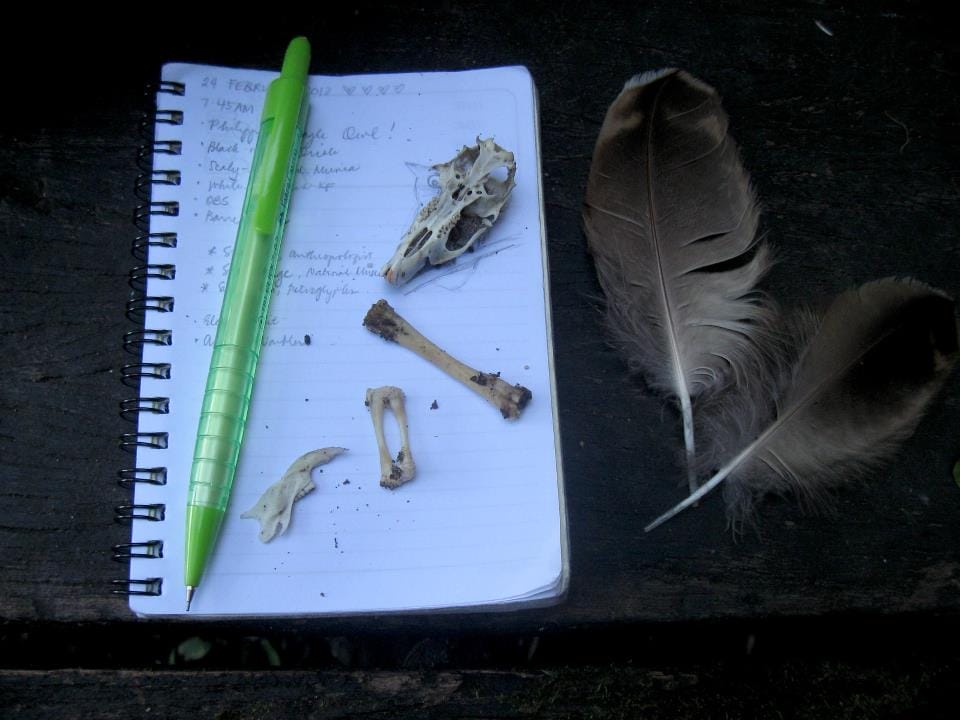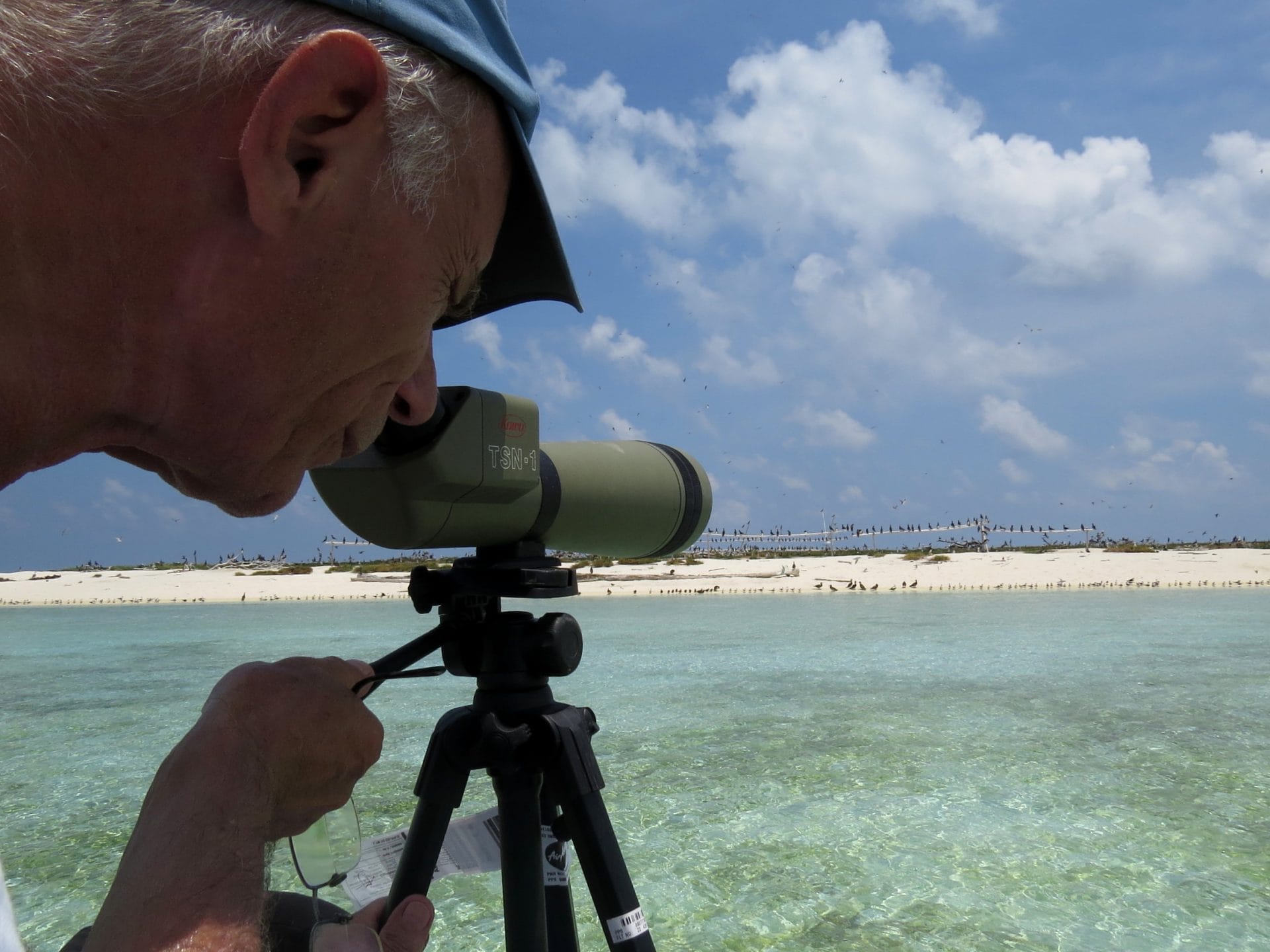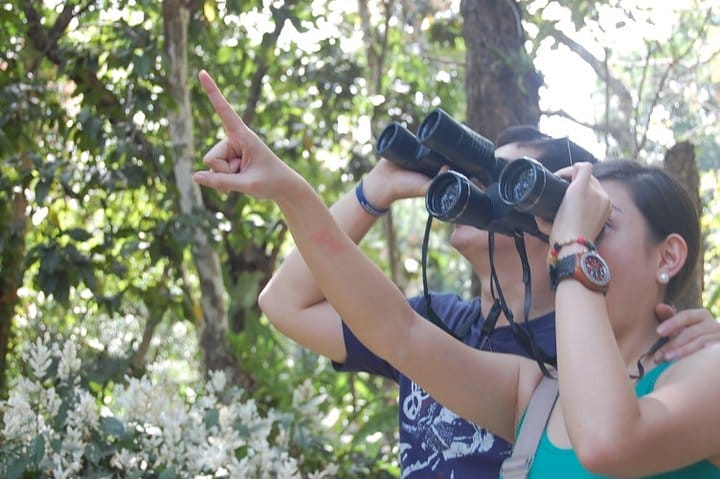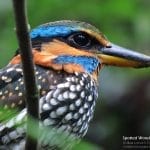BIRDWATCHING 101: What a Fledgling Birder Needs to Know
by Maia Tañedo
Maybe you’ve heard the term before: birdwatching or birding. Maybe you let out a little snigger or commented something “green”, particularly if you’re Filipino and know the innuendo to the term “bird.” Maybe you’ve come across people staring up at trees in awe, some with binoculars, some with cameras, and their gaze made you instinctively look up as well. “What the hell are they looking at?!” you may have silently thought to yourself as you tore your gaze away from the tree and went on your way. Those were probably birdwatchers (or birders) happily observing a bird, usually unseen to the “untrained” eye. Curious? Here’s a crash course about the wonderful world of birdwatching.

What is birdwatching anyway?
Birdwatching, very simply put, is watching birds. I am not being a wisecrack and there are parameters that help clearly define the hobby from the occasional “Oh look, there’s a bird on top of my car.”
Birdwatching is observing birds in their natural habitat. So that means, going to the zoo to admire that showy peacock does not count as birdwatching. Part of birdwatching is taking the time to observe a bird’s physical appearance (or field marks) and also its behavior. Like any living thing, humans included, its behavior changes once in captivity. Part of the joy of birdwatching is being able to witness a bird’s natural behavior in the wild: pooping, hunting, courtship, mating, feeding of young… all these are treats to any birdwatcher’s eyes. Think: NatGeo specials live before your own eyes!

Birdwatching can as simple as sitting in your home lanai or veranda and taking the time to watch that black and white bird flick its tail back and forth while perched on the electric wire to taking 6-hour trek up a mountain in search of a single bird. As long as you’ve taken some time to stop and appreciate the presence of a bird and actually observed it, no matter how common it may seem to be, that counts as birdwatching.

How do I start?
More often, people start by seeing a particular bird that is “NOT a maya bird.” The mayas or Eurasian Tree Sparrows have become so common in urban areas in the Philippines that they have blended into the scene and are ignored by people. So much so that when a “not-a-maya-bird” bird makes an appearance, it catches people’s attentions.
To really get started with birdwatching, I personally found it best to go with a group of more experienced birdwatchers. The Wild Bird Club of the Philippines (WBCP) conducts guided bird walks in different locations around the city which anyone can sign up for and join. I joined my first WBCP guided walk in UP Diliman back in April 2010 and haven’t really stopped birding since.

If you’re more the type who wants to try things out solo first, best place to start is in your own backyard. Look around your neighborhood for what birds live in the trees around you. If you are lucky enough to live in a place with a park, spend some time there and listen to the different birds singing and maybe spot one or two even without binoculars. Nearby universities and campuses usually have lots of trees which can be great places to birdwatch even for a few hours in the morning.
What do I need?
Basically, all you’ll need is a pair of binoculars. Binoculars (or bins) allow you to see a bird up close and observe its details without flushing it away. Believe me when I say that it is a whole new experience when you see a bird up close. Borrow or buy, if you really get into birdwatching you’ll eventually want to invest in a good pair of bins. I started with a pair bought from a tiangge and later upgraded to a spankin’ pair of Minox bins. But if you’re just starting out, a simple pair will do. If you join a WBCP guided trip, you may rent a pair for the entire activity for a minimal fee. More on binoculars in the next issue.
Aside from a pair of binoculars, a notebook is a really useful tool to have especially if you are just starting out. A small notebook is used to take down field notes: descriptions of birds you see, sketches, and other notes you may have, like the location you birded it, the time you spent birding, as well as other significant information like a bird’s behavior you observed. This will help you identify the bird later on.

A field guide is another tool in a birdwatchers bag. A field guide helps you identify the birds you see. Being a beginning birder is an exciting time because almost all the birds you encounter are new! A field guide will be your best friend when it comes to naming all the beautiful birds you’ll be seeing. There are a number of field guides for the Philippines available, but the most complete at the moment is the Guide to the Birds of the Philippines by Robert Kennedy.

A spotting scope is another piece of equipment you can add to your birding arsenal. It functions like a telescope, allowing even more close-up views of birds and those that are quite far away.

A camera is another very useful item to have when birdwatching. Aside from it allowing you to capture the birds’ beauty, preserve the moment, and share it with others, it also allows you to take photos of birds you don’t know for identification later on. These “documentary shots” should go hand in hand with your field notes to enable a positive identification of a particular bird.

Other items you may need while birdwatching: a bottle of water, a hat, insect repellant, sun screen, small umbrella, etc. Just the usual items you would bring when you go out for a picnic or outing.
Why birdwatch anyway?
Why oh why indeed. Birders sometimes ask themselves that question actually, truth be told, depending on the situation (usually during a long, difficult hike and it rains.) But basically, it makes us happy.

Remember when PokemonGo was first launched? Millions of people from all over the world went out of their houses in search of as many different kinds of Pokemons in different locations. Birdwatching is like that actually. Birders go out in the field in search of as many different kinds of birds to see. Remember the feeling of finding your first Pikachu? That happiness is also felt when a birdwatcher sees a bird for the first time. And the first Pikachu is the most special right? There is an exhilarating feeling when you’ve successfully captured your first Pikachu and added it to your roster. In the world of birdwatching, seeing a bird for the first time is called a lifer (or life bird.) A new bird to add to your life list! And, like your first ever Pikachu, getting a lifer is always a special event and you’ll get lots of congratulations from your fellow birders, for sure. You may have to sponsor celebratory coffee or dinner after, but that depends on what kind of birder friends you have. Kidding.
So how many Pokemons, er, birds can you actually add to your life list? That topic is for another issue! Stay tuned!
So, that in a nutshell, is my way of introducing you to birdwatching. I hope I have left you with some questions in your minds so you’ll keep reading my column. Send me an email if you have any birdwatching-related queries and I’ll try my best to answer them in future issues of eBON.
You may also want to check out an article I wrote for the 10th anniversary of the WBCP featuring the 10 Most Common Urban Birds to get you started in your journey in the wonderful world of birdwatching.



Reblogged this on MaiaBird's Notebook.